SAP Change Management
Filter By
Browse By
- SAP Analytics and AI
- SAP Application Development and Integration
- All SAP Application Development and Integration
- SAP ABAP
- SAP ABAP Development Tools
- SAP ABAP Test Cockpit
- SAP API Management
- SAP BAPI
- SAP Basis
- SAP BRF
- SAP Business Application Studio
- SAP CMS
- SAP Design Studio
- SAP Development Tools
- SAP DevOps
- SAP EAI
- SAP EDI
- SAP Extension Suite
- SAP Fiori
- SAP Fiori Elements
- SAP Integration Suite
- SAP Low Code Application Development
- SAP Low Code Automation
- SAP Netweaver
- SAP Release Management
- SAP UI5
- SAP Web Application Server
- SAP Web IDE
- SAP Business Process Management
- SAP Center of Excellence
- SAP CIO
- SAP Customer Experience
- SAP Data and Data Management
- All SAP Data and Data Management
- SAP BW
- SAP BW/4HANA
- SAP Crystal Reporting
- SAP Data Archiving
- SAP Data Center
- SAP Data Governance
- SAP Data Integration
- SAP Data Migration
- SAP Data Quality
- SAP Data Services
- SAP Data Strategy
- SAP Data Visualization
- SAP Data Warehouse Cloud
- SAP DMS
- SAP Document Control
- SAP EIM
- SAP ETL
- SAP ETL Tools
- SAP HANA
- SAP HANA Administration
- SAP HANA Deployment Infrastructure
- SAP HANA Studio
- SAP Master Data
- SAP Master Data Governance
- SAP MDM
- SAP Enterprise Architect
- SAP Enterprise Asset Management
- SAP ERP
- SAP Finance
- All SAP Finance
- SAP Accounting
- SAP AR AP
- SAP Asset Accounting
- SAP Billing Systems
- SAP BPC
- SAP BRIM
- SAP Cash Management
- SAP Central Finance
- SAP Controlling
- SAP COPA
- SAP Cost Center Accounting
- SAP e-invoicing
- SAP FICO
- SAP Finance Automation
- SAP Financial Closing Cockpit
- SAP Financial Consolidation
- SAP Financial Planning
- SAP FX Risk
- SAP General Ledger
- SAP Global Tax Management
- SAP Hyperion
- SAP Order to Cash
- SAP Payment Processing
- SAP Profitability Analysis
- SAP Rebate Management
- SAP S/4HANA Finance
- SAP Universal Journal
- SAP Governance Risk and Compliance
- SAP Human Capital Management
- SAP Intelligent Technologies
- SAP Platform and Technology
- All SAP Platform and Technology
- SAP Business Technology Platform
- SAP Cloud Connector
- SAP Cloud Integration Platform
- SAP Cloud Migration
- SAP Cloud Platform
- SAP Cloud Providers
- SAP Cloud Strategy
- SAP Container Platform
- SAP Digital Asset Management
- SAP Digital Integration Hub
- SAP Digital Signature
- SAP HANA Enterprise Cloud
- SAP HEC
- SAP Hyperscalers
- SAP Infrastructure
- SAP Messaging
- SAP Smart Forms
- SAP Quality and Testing
- SAP Security
- SAP Spend Management
- SAP Supply Chain Management
- All SAP Supply Chain Management
- SAP APO
- SAP Asset Management
- SAP Business Network
- SAP Digital Manufacturing Cloud
- SAP Digital Twin
- SAP EWM
- SAP IBP
- SAP Inventory Management
- SAP Label Printing
- SAP Logistics
- SAP Manufacturing
- SAP Manufacturing Automation
- SAP MES
- SAP MII
- SAP MM
- SAP MRO
- SAP MRP
- SAP Order Management
- SAP Plant Maintenance
- SAP PLM
- SAP Production Planning
- SAP S&OP
- SAP SD
- SAP SPM
- SAP Supply Chain Planning
- SAP Track and Trace
- SAP Transportation Management
- SAP System Administration
SAP Change Management
The demand of business for rapid innovation to support digital transformation has increased across all organizations. Non-SAP applications, especially those on the cloud, are often deployed within months. In an SAPInsider survey on Change Management and Testing for SAP Change Management and Testing in SAP, 40% of respondents said their goal was rapid deployment of updates and upgrades with 61% wanting to reduce business risk and 42% wanting negligible disruption.
SAP Change Management
The demand of business for rapid innovation to support digital transformation has increased across all organizations. Non-SAP applications, especially those on the cloud, are often deployed within months. In an SAPInsider survey on Change Management and Testing for SAP Change Management and Testing in SAP, 40% of respondents said their goal was rapid deployment of updates and upgrades with 61% wanting to reduce business risk and 42% wanting negligible disruption.
Change management is critical is such scenarios to make sure developers know what is changing, what the impact of changes are and plan for seamless rollouts that minimize business downtime. Change management is the process of managing, planning, scheduling, and controlling a software build through testing and deploying in the production environment. The end goal is successful deployment of all planned changes into the production environment.
Like a well-orchestrated supply chain, change management ensures the rollout of series of changes (called release cycle) to achieve the product rollout. There can be major releases which are long projects taking from 1-3 years and minor releases which may take days or weeks.
SAP provides change management capabilities to plan and execute change execution. Some of the benefits of the capabilities are:
- Reduced risk through extensive testing
- Less business risks
- Better test system environment through better planning
- Increased productivity due to standardization, schedules and roles
- Better planning and tracking of implementation activities
The release process involves several stages of the release cycle
- Scoping – documenting the requirements and developing the IT requirements
- Building – developing the software changes for a certain release cycle
- Testing – testing the changes through various tests such as user acceptance, regression and integration testing
- Deploying – implements the technical cutover of the release by importing all transports into production, which is managed using SAP Solution Manager.
System integrators and consultants such as Cognizant, Microexcel, TechMahindra,
SAP Solution Manager has long been used to plan, create packages for deployment, and assign requirements and changes to a release. SAP ChaRM is an SAP Solution Manager tool to manage processes that occur in a transition from concept to testing until final advertising and Production. We can track changes and transport requests for change management systems throughout the entire business system. SAP Solution Manager Project will keep track of which requests for transport are linked to which projects and in what order they have for import.
Many specialized vendors have rolled out innovative products to manage change such as Panaya, Rev-Trac, and ServiceNow. As more and more customers move to a continuous integration/continuous deployment (CI/CD) or Agile/DevOps approaches, there is significant effort to plan and track all the changes. Strong collaboration, planning and automation of processes including testing and rollover are required.
Read this case study to learn how a Government Organization Improved Its ChaRM Release Strategy and Release Management Process.
401 results
-

 Premium
Premium
Benchmark SAP Application Controls to Increase Testing and Documentation Efficiency
Reading time: 17 mins
See how to use your SAP system’s table logging functionality to support a benchmarking strategy for application controls. Key Concept On the technical side, many companies are confused about the impact table logging might have on performance. They confuse database-level table logging with application-level table logging and the performance impact of logging master and transactional…...…
-

 Premium
Premium
Best Practices for Planning, Testing, and Deploying Changes in a Mature SAP ERP Landscape
Reading time: 15 mins
/Project ManagementMike Moore, an SAP technical solution architect, explains the benefits of using an N+1 landscape model when making project and production support changes, including avoiding long production support freezes. He shows how to implement it, drawing on lessons learned during deployment. Key Concept The SAP N+1 landscape provides a solution for lowering the risk…...…
-

 Premium
Premium
Q&A: Managing Change: Best Practices and Advice to Be Sure the Change You Get Is the Change You Want
Reading time: 17 mins
ManagementDuring implementation projects, change management can be forgotten amid more tangible technology-related project areas. If your employees aren’t adequately prepared for change and assisted with the transition into new processes or work functions, however, the project’s return on investment (ROI) and overall success may suffer. We talked to SAP’s Kerry Brown about the importance of…...…
-
-

 Premium
Premium
Track and Analyze Changes to Customizing Tables Using Standard SAP Reports and Tools
Reading time: 13 mins
Help SAP users audit configuration changes and reduce the time needed to resolve issues caused by configuration by tracking and analyzing the changes to customizing tables. Key Concept With many different people working on the implementation and support of the SAP ERP HCM system, it is vitally important to track SAP configuration changes. This step…...…
-

 Premium
Premium
8 New ChaRM Features with SAP Solution Manager 7.1
Reading time: 14 mins
ManagerLearn about the new features of Change Request Management (ChaRM) delivered with SAP Solution Manager 7.1. Discover the value your change management processes receive by implementing or upgrading to 7.1. Learn eight brand-new features that aid in developing a strong business case to use SAP Solution Manager as a single platform to manage changes to…...…
-

 Premium
Premium
Test Scope Optimization for Large SAP Change Events Using BPCA of SAP Solution Manager 7.1
Reading time: 17 mins
ManagerCompanies deploying SAP Support Package Stacks or SAP enhancement packages to their SAP solutions need to perform regression tests for their business processes. In general a lot of effort goes into setting up and performing the necessary regression tests. See how you can facilitate this testing process using the Business Process Change Analyzer (BPCA) of…...…
-

 Premium
Premium
How to Configure an Exchange Rate Worklist for a Specific Currency
Reading time: 7 mins
Walk through the necessary steps to define a worklist and assign it to an exchange rate for a specified currency. This process helps restrict access to only exchange rates of the specific currencies for which users are responsible. Key Concept A worklist of exchange rates helps to restrict the user access to the exchange rates…...…
-
-

 Premium
Premium
Dealing with France, Italy, or Spain? What You Need to Know About Processing Bills of Exchange
Reading time: 12 mins
The form of payment called bill of exchange provides a company with control over when payment is made. It is common in some European countries. Key Concept Bills of exchange were invented by the Lombard bankers hundreds of years ago as a safe way of transferring money in payment of goods or services. They are…...…
-

 Premium
Premium
Streamline Cross-Company Postings Using SAP Parallel Valuation and Transfer Pricing in an LIV Process
Reading time: 37 mins
Learn how to implement SAP transfer pricing and parallel valuation in goods receipt and an accounts payable Logistics Invoice Verification (LIV) process. Key Concept Parallel valuation in an SAP system helps an organization with multiple legal entities or company codes to prepare for consolidation. Multinational companies can use transfer prices in their cross-company transactions through…...…
-

 Premium
Premium
Sync Your Global Template with Your Productive System for Better ALM
Reading time: 19 mins
Manager/Project ManagementSAP Solution Manager 7.0 has reports and functionality that can assist project managers and business owners with identifying and maintaining process changes that can be leveraged in a global template. Explore the capabilities and limitations of these features in SAP Solution Manager 7.0 and discover how to augment the capabilities using audit procedures. Learn…...…
Featured Insiders
-

Akash Kumar
Associate General Manager, HCL
-

Darriel Dawne
VP, SAP Sustainability Marketing & Solutions
-

Gaurav Pandey
Principal SAP Architect, Amgen
Become a Member
Unlimited access to thousands of resources for SAP-specific expertise that can only be found here.
Upcoming Events
Related Vendors
Your request has been successfully sent


